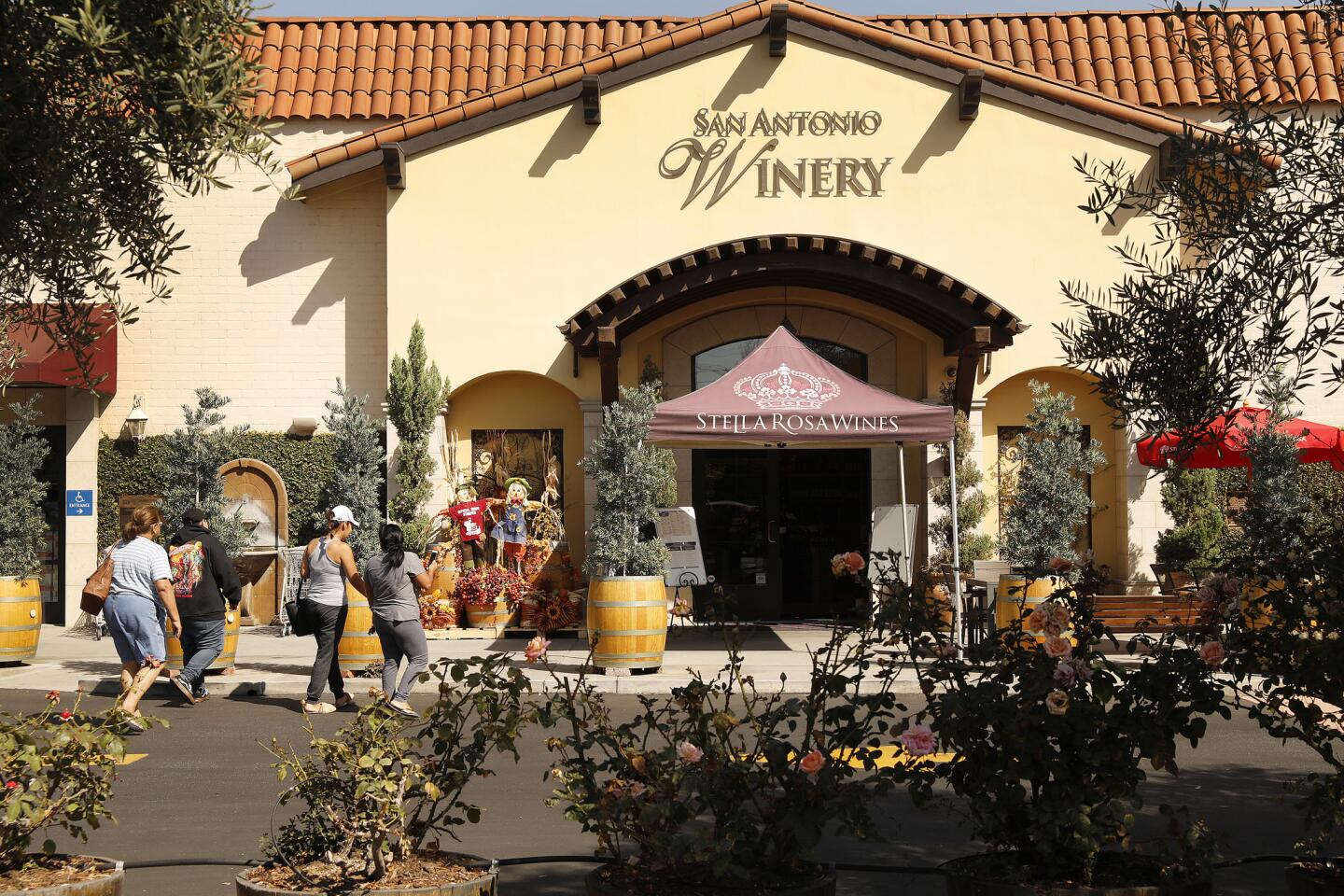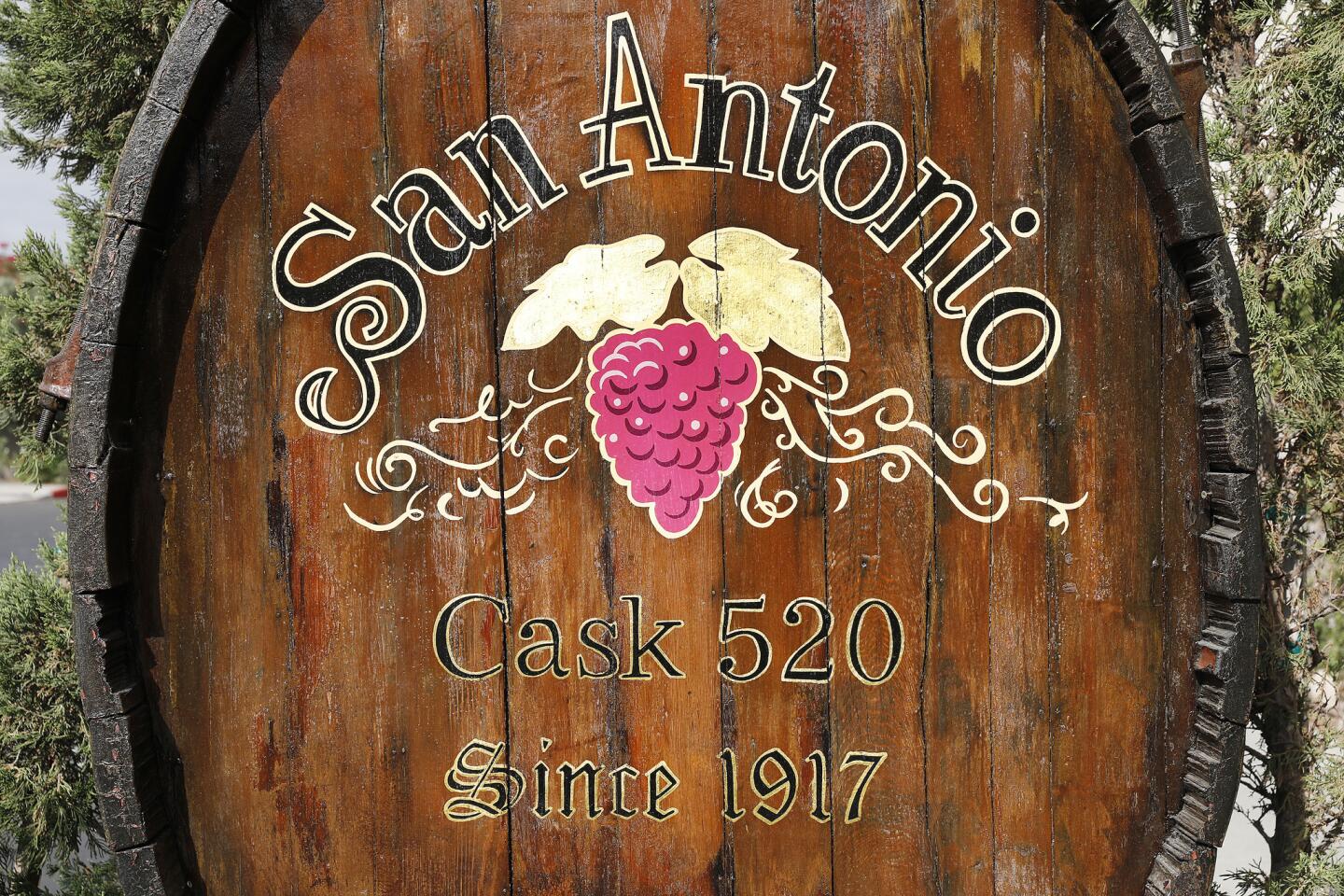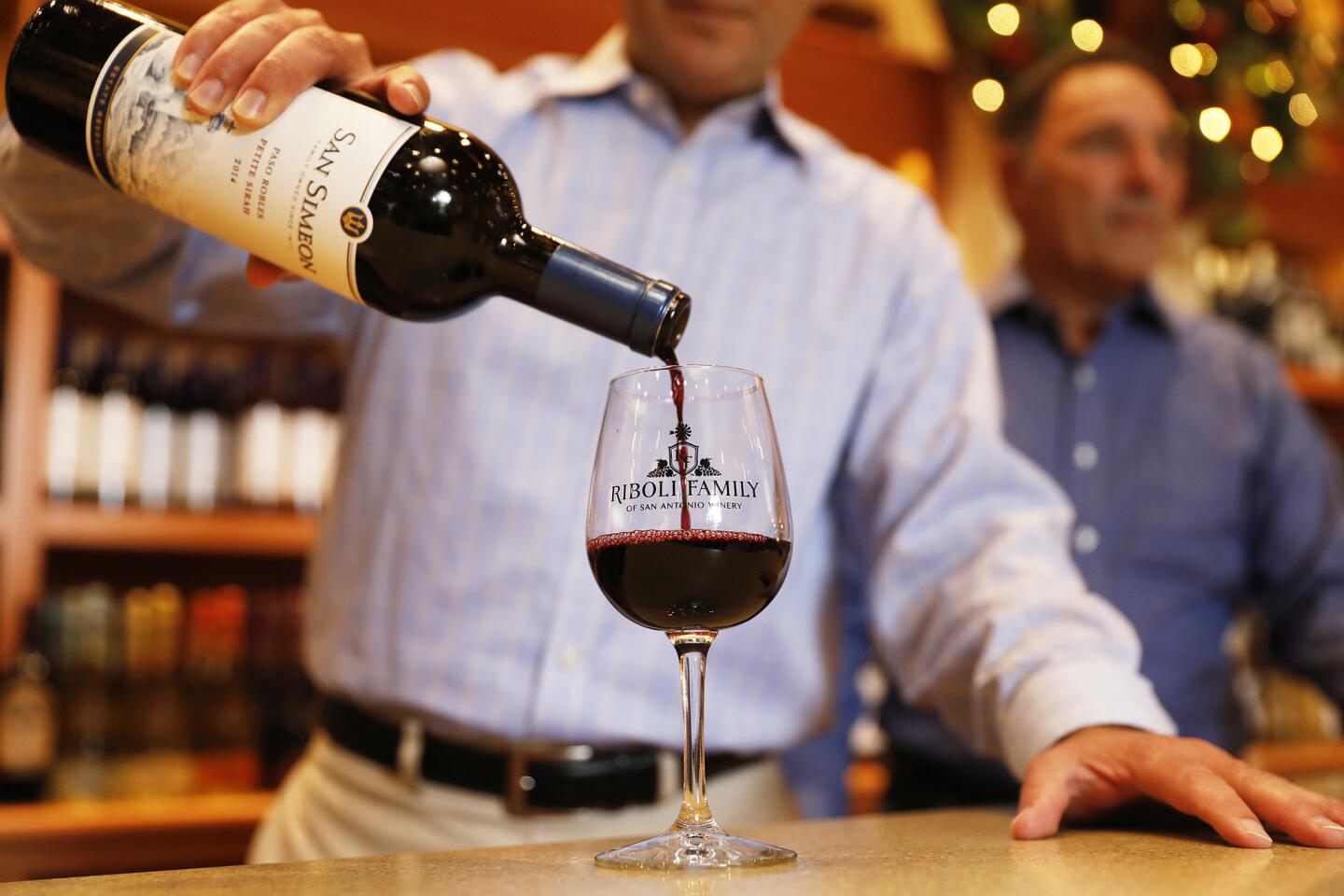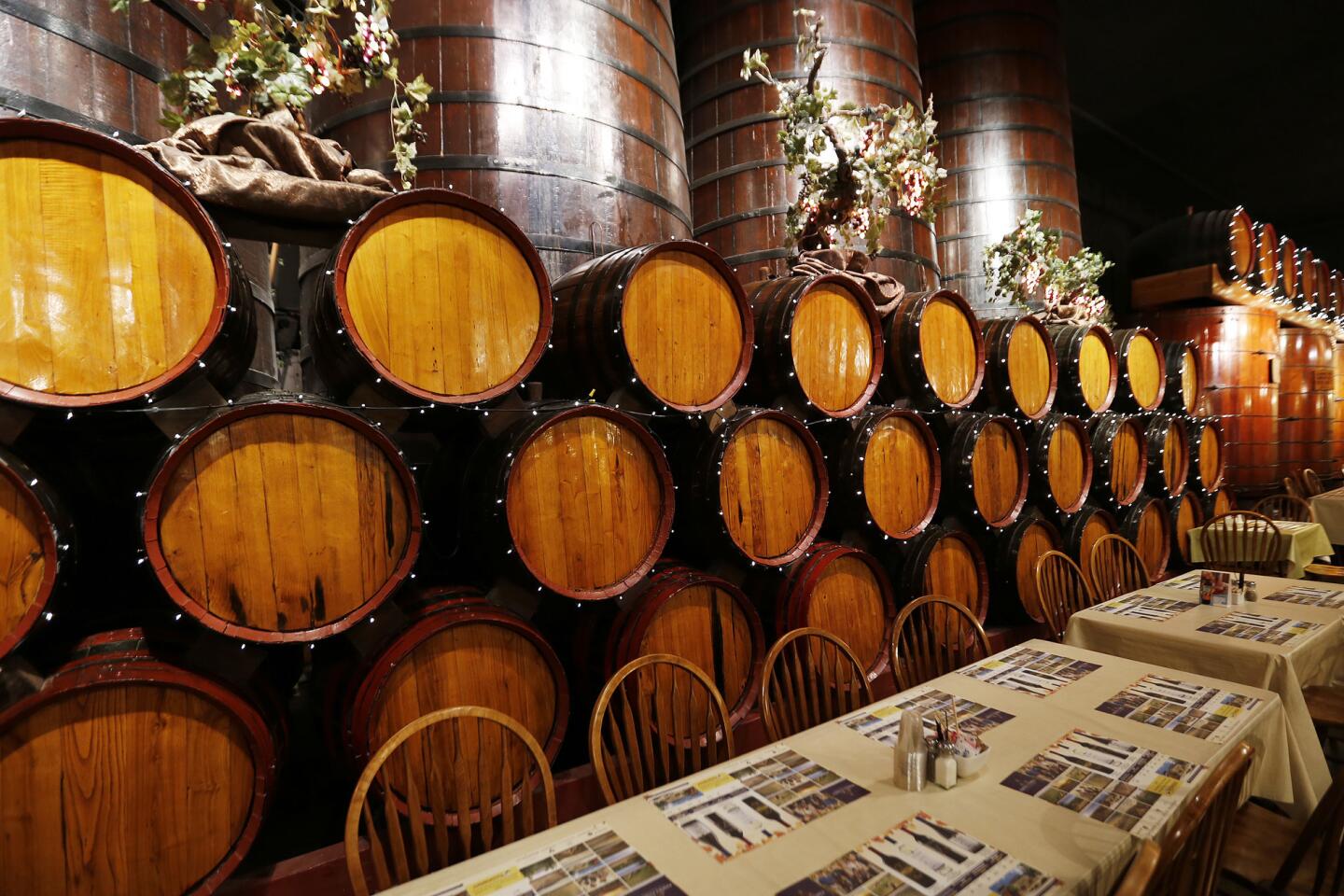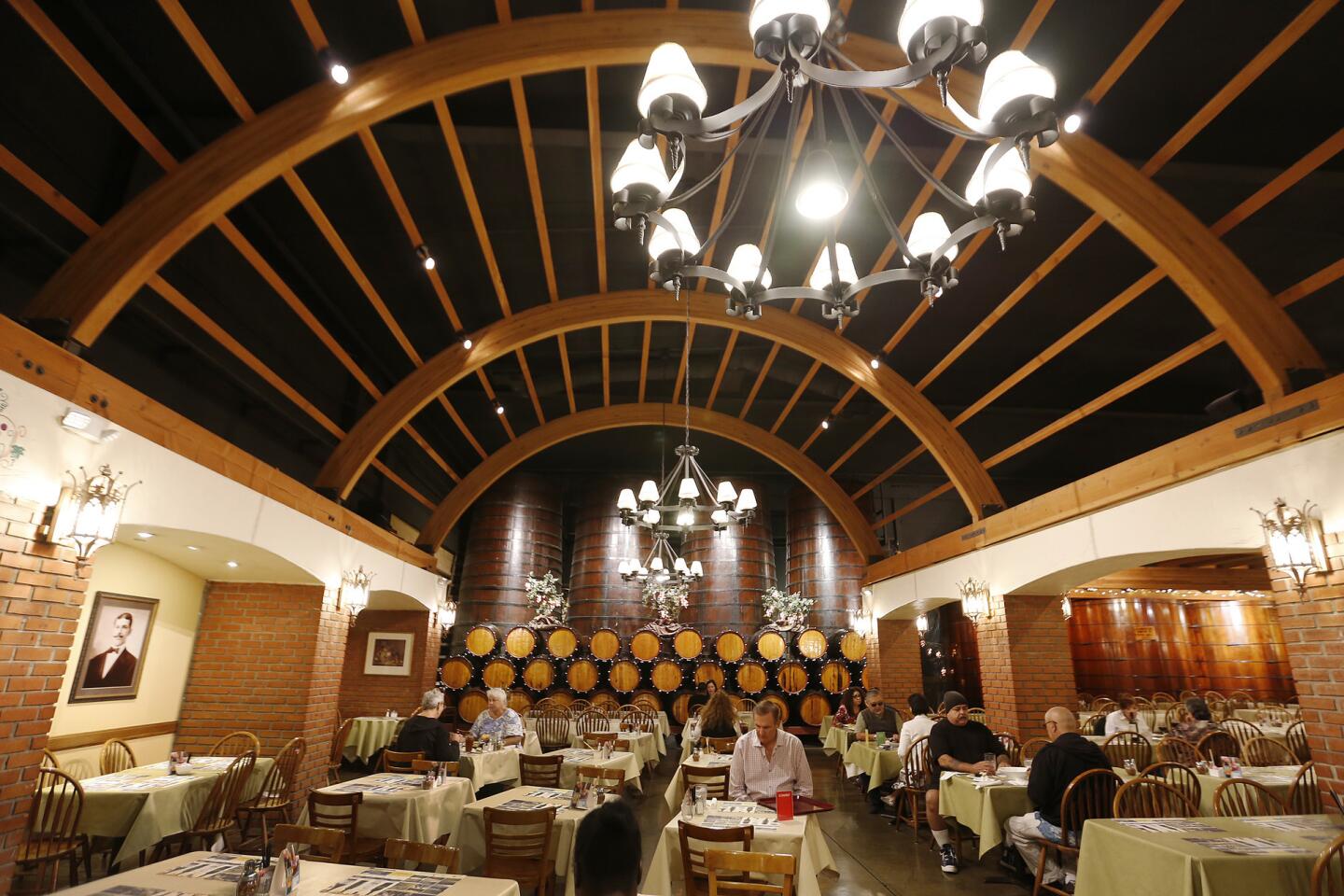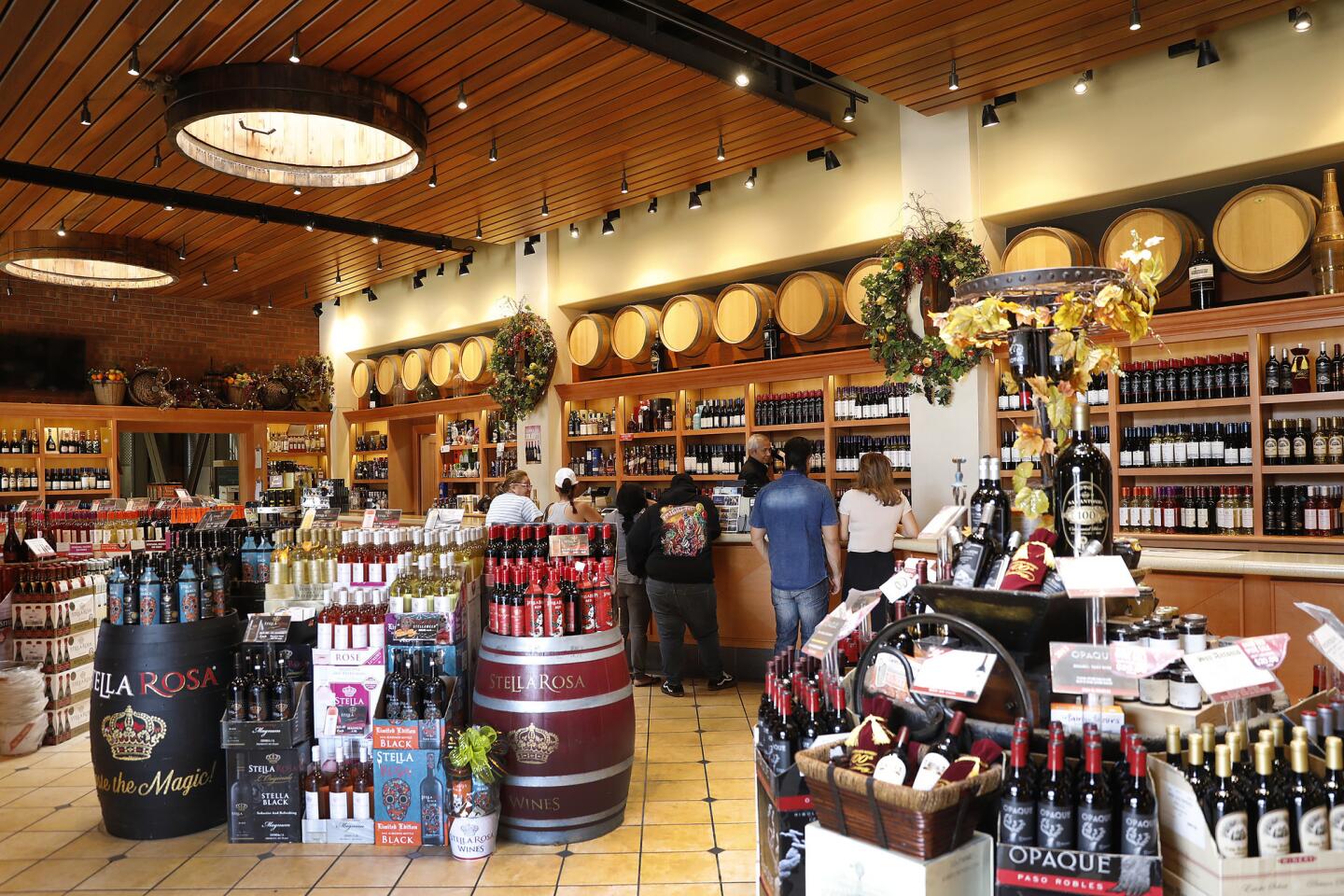The story behind Stella Rosa, and all those super extra billboards
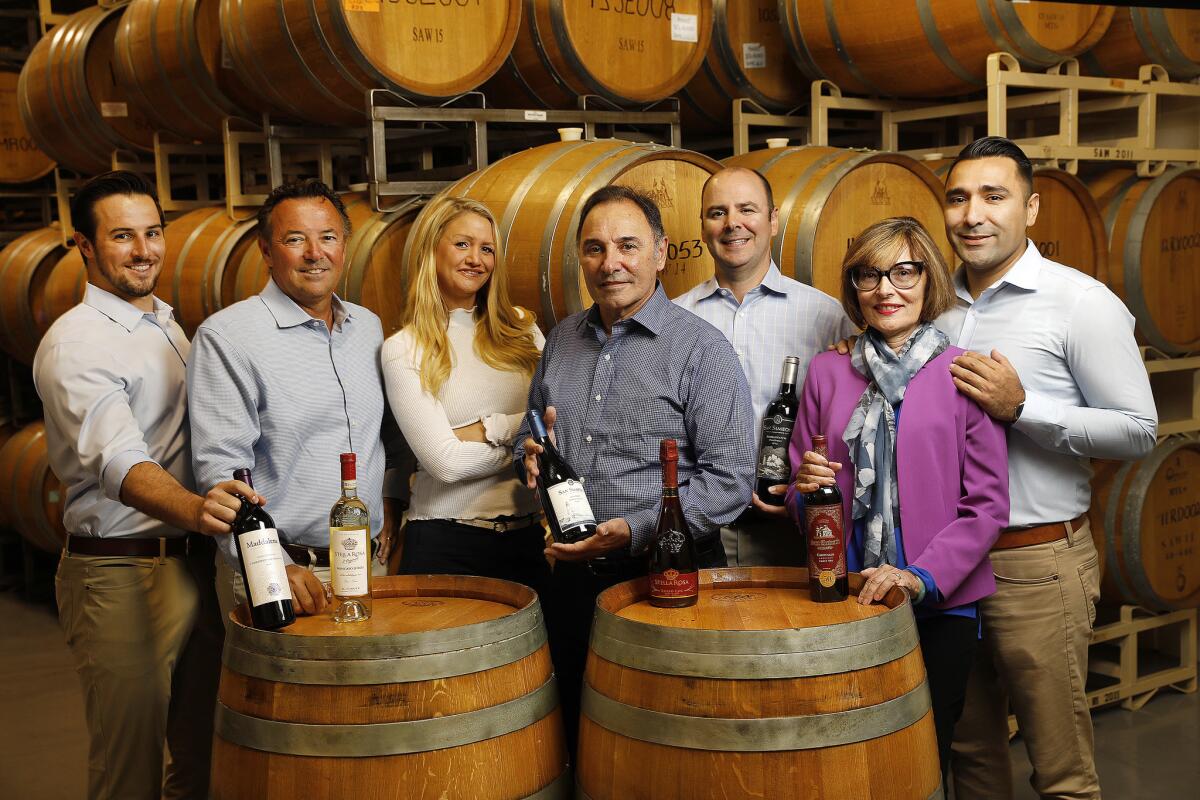
- Share via
The bestselling wine brand in California isn’t from California. It’s not Josh or Barefoot or Coppola, or Two-Buck Chuck. It’s an Italian import called Stella Rosa, created by the Riboli family, a wine company based not in Napa or Sonoma but in the shadow of Dodger Stadium, in Lincoln Heights.
Even if you haven’t tasted Stella Rosa — there are 22 different flavors to try — you can’t help but be familiar with the brand. The company has sponsored floats in the Rose Bowl, flown airplanes trailing banners down West Coast beaches, and placed a majority of its 400 billboards around the greater Los Angeles area, extolling you to “Taste the Magic” and to “Stellabrate.” So if you’ve never stellabrated, perhaps it’s time to get acquainted.
According to data from Nielsen, Stella Rosa is the top-selling import brand in the country. It has enjoyed double-digit growth almost since its inception, and its popularity shows no signs of slowing. Market Watch, an industry analyst, estimates that sales will exceed 2 million cases this year.
For more than a century, through four generations, the Riboli family has been making, importing and selling wine. Even through Prohibition, when they landed a contract to make sacramental wine for Roman Catholic masses, they’ve made wine — all kinds of wine, from jug wines to appellation wines; much of the latter now comes from estate vineyards on the Central Coast.
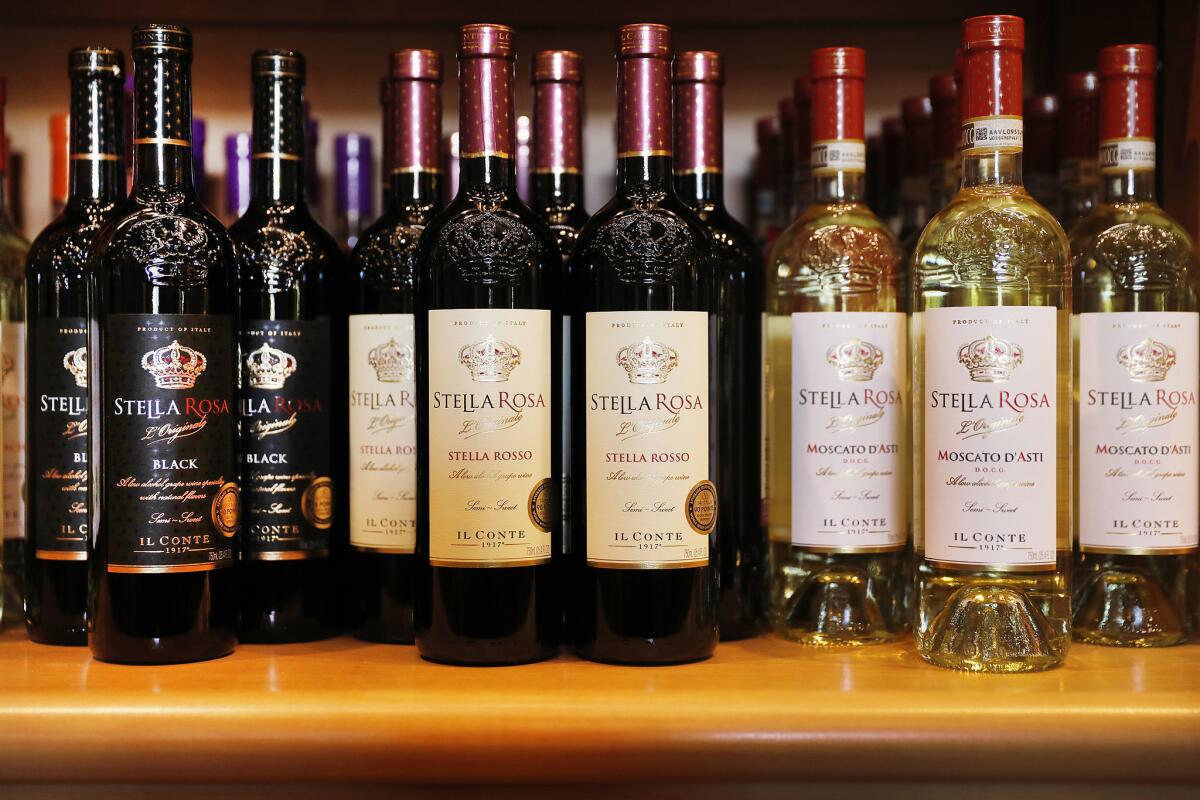
They sell most of these wines direct, in their bustling Lincoln Heights winery tasting room, which also houses a restaurant and gift shop. Fifteen years ago, Anthony Riboli and his father, Santo, noticed the rise in demand for a relatively obscure class of Italian low-alcohol sparkling wine called Moscato d’Asti, made in the northern region of Piedmont.
Occasionally in the tasting room, the staff would take queries from patrons asking if there was such a thing as a red Moscato d’Asti. “They were interested in the health benefits of red wine,” Riboli says.
The Ribolis had import partners in Piedmont, who were already making versions of such wines, like Brachetto d’Acqui, a light, fizzy red wine with sharp, bright aromatics. So they ordered half a dozen prototypical blends, and from those initial samples, Stella Rosa red was born.
Stella Rosa wines are 5.5% alcohol by volume, or less than half as boozy as the average bottle of wine. The arrested fermentation leaves plenty of residual sugar, and the wine is lightly frizzante, which gives it a more pleasant mouthfeel.
The first 1,000 cases of wine were sold in two weeks. The Ribolis re-upped immediately and have been re-upping ever since, adding wines, flavors, testing different tiers, different colors and different flavor combinations. There are Pink, Platinum, Black, Gold and Imperiale versions; there is Stella Peach, Stella Green Apple, Stella Red Apple, Stella Tropical Mango, and other flavors, all natural, all made to order.
Each morning, crowds file into the tasting room at 11 a.m. to buy Stella Rosa wines, T-shirts, tote bags, fans, scented candles, lip balms and jars of Stella Rosa marinara. Cases of the wine are stacked chest-high in the display room and are restocked daily.
According to Anthony Riboli, sales of the Stella wines are particularly strong with women, as well as Hispanic and Asian buyers; he will tell you that the tasting room is just like the melting pot that is Los Angeles, and in the several hours I spent there, I saw no reason to dispute this.
So how, you ask, does it taste? The Stella Rosa wines resemble wine, they’re reminiscent of wine, but no one who drinks wine regularly would mistake it for wine. To my palate they have at least as much in common with soft drinks (7-Up comes to mind) as they do with, say, Robert Mondavi Cabernet.
But if you don’t drink Mondavi Cabernet, then this comparison may be meaningless to you. You may not be troubled by the rush of sugar, the jumbled terpenic flavors that frame the wine as a stand-in for the missing alcohol. And you may enjoy the soda-pop sweetness, which ameliorates any perception of flaws, at least until the finish.
Residual sugar in wine, of course, isn’t anything new — hundreds of more expensive wines, from Kendall Jackson Vintner’s Reserve Chardonnay to Meiomi Pinot Noir and the Prisoner, employ it to make their wines taste more plush and seductive. And residual sugar inhabits literally thousands of wines from Germany, Austria, France — indeed, from all over the world.
Stella Rosa is decidedly better than Boone’s Farm, than Arbor Mist or any of the hundreds of concoctions with lurid colors, additives and cloying sweetness that crowd supermarket and bodega shelves. Stella Rosa isn’t as fake as any of these, but that doesn’t make it altogether real, either.
What it does best is occupy a niche that has been hiding in plain sight for decades. It serves to remind us that the wine market is at least two markets, one that takes itself very seriously, perhaps too seriously, that serves to distinguish itself from the mainstream beverage market. The other engages with that mainstream, seeks out commonalities with it, to sell wine that falls closer to its most common denominators.
The Riboli family — savvy, clever and self-preserving — seems to move comfortably in both.
More to Read
Eat your way across L.A.
Get our weekly Tasting Notes newsletter for reviews, news and more.
You may occasionally receive promotional content from the Los Angeles Times.
